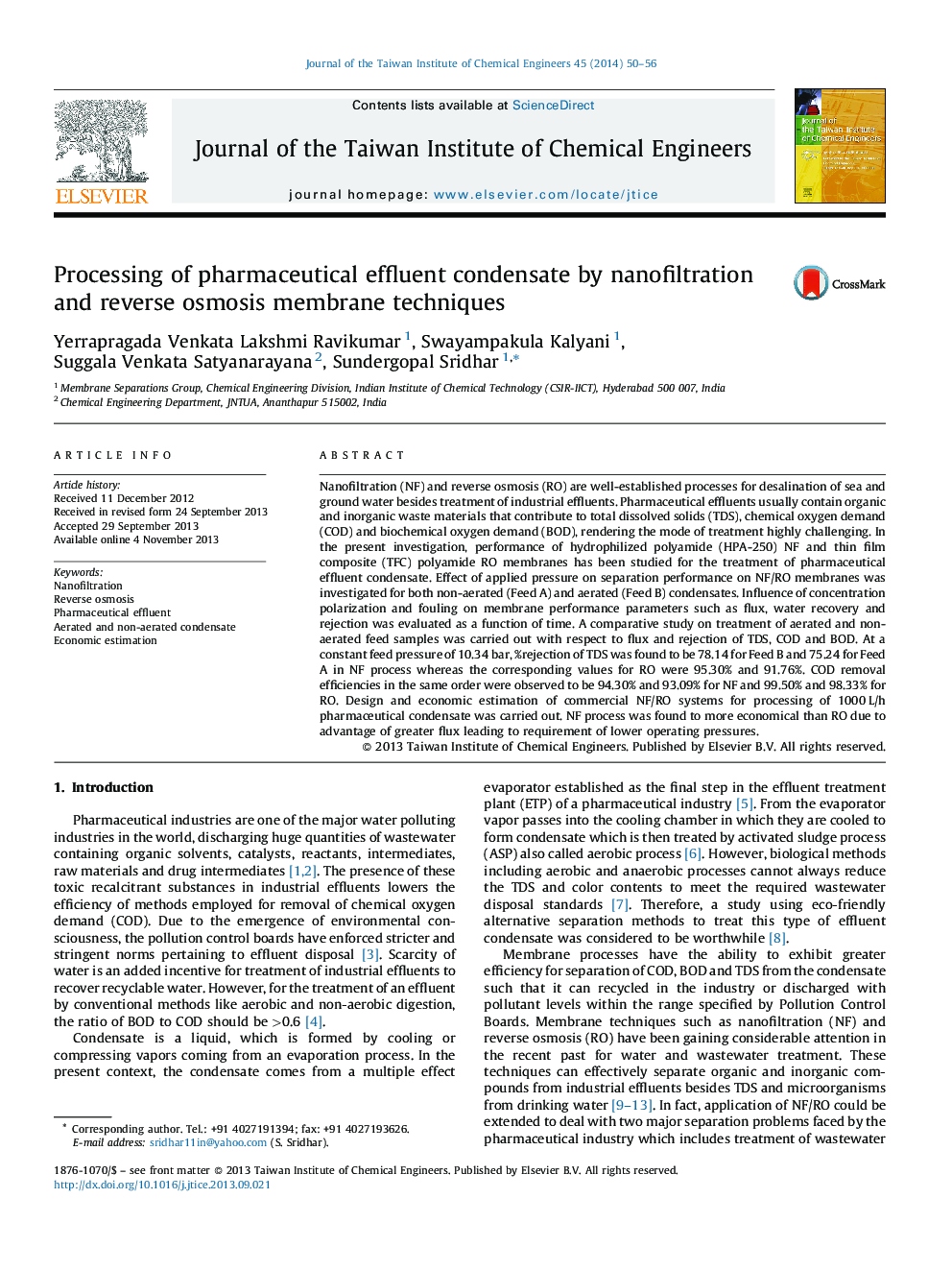| کد مقاله | کد نشریه | سال انتشار | مقاله انگلیسی | نسخه تمام متن |
|---|---|---|---|---|
| 691073 | 1460434 | 2014 | 7 صفحه PDF | دانلود رایگان |
• Processing of pharmaceutical effluent using NF/RO systems.
• Effect of operating parameters such as pressure, TDS, %rejection of COD and fouling on membrane performance.
• Comparative study on treatment of non-aerated and aerated feed sample.
• The scale up and economic cost estimation for NF and RO systems.
Nanofiltration (NF) and reverse osmosis (RO) are well-established processes for desalination of sea and ground water besides treatment of industrial effluents. Pharmaceutical effluents usually contain organic and inorganic waste materials that contribute to total dissolved solids (TDS), chemical oxygen demand (COD) and biochemical oxygen demand (BOD), rendering the mode of treatment highly challenging. In the present investigation, performance of hydrophilized polyamide (HPA-250) NF and thin film composite (TFC) polyamide RO membranes has been studied for the treatment of pharmaceutical effluent condensate. Effect of applied pressure on separation performance on NF/RO membranes was investigated for both non-aerated (Feed A) and aerated (Feed B) condensates. Influence of concentration polarization and fouling on membrane performance parameters such as flux, water recovery and rejection was evaluated as a function of time. A comparative study on treatment of aerated and non-aerated feed samples was carried out with respect to flux and rejection of TDS, COD and BOD. At a constant feed pressure of 10.34 bar, %rejection of TDS was found to be 78.14 for Feed B and 75.24 for Feed A in NF process whereas the corresponding values for RO were 95.30% and 91.76%. COD removal efficiencies in the same order were observed to be 94.30% and 93.09% for NF and 99.50% and 98.33% for RO. Design and economic estimation of commercial NF/RO systems for processing of 1000 L/h pharmaceutical condensate was carried out. NF process was found to more economical than RO due to advantage of greater flux leading to requirement of lower operating pressures.
Journal: Journal of the Taiwan Institute of Chemical Engineers - Volume 45, Issue 1, January 2014, Pages 50–56
